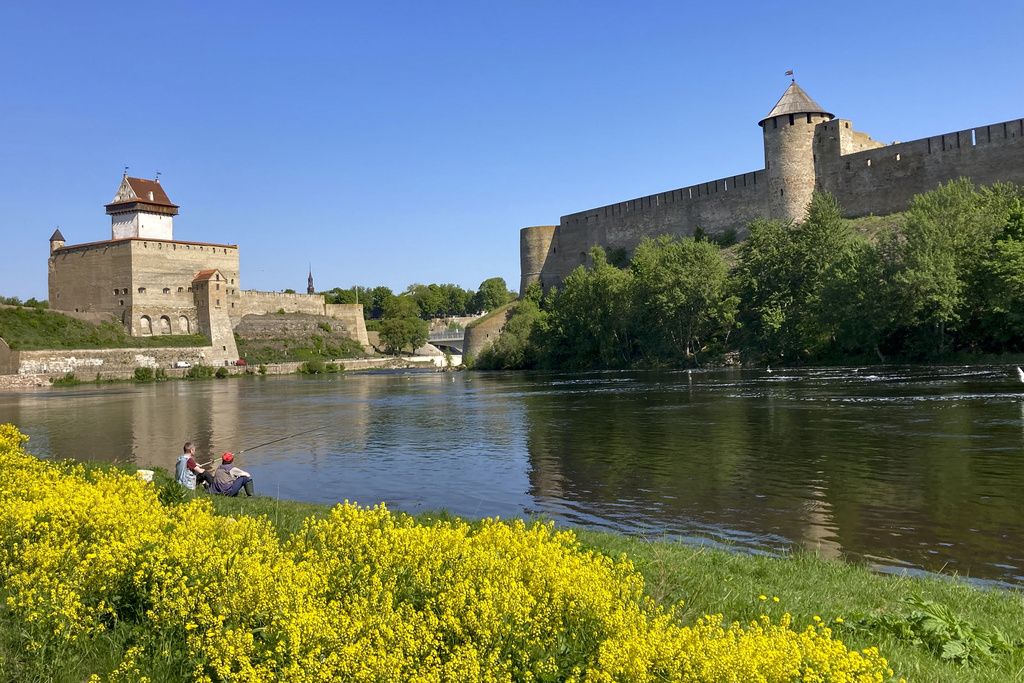

A group of NATO allies has agreed to establish a “drone wall” to monitor the trans-Atlantic alliance’s borders with Russia amid a series of measures from Moscow that point to increasing “hybrid” pressure in the Baltic States region.
“This is a completely new thing — a drone wall stretching from Norway to Poland,” Lithuanian Interior Minister Agnė Bilotaitė told regional media on Friday. “And the goal is to use drones and other technologies to protect our borders … against provocations from unfriendly countries and to prevent smuggling.”
Bilotaitė and her counterparts envision a border security network stretching from Norway and Finland to the Baltic States and Poland. Those drone networks could provide an early warning in the event of a crisis that warrants a mass evacuation, she implied.
“We agreed to hold regional drills to ensure the evacuation of the population, to see how our institutions are prepared to work, to interact with each other, what our capacity is to accommodate people, what the capacity of other countries is, whether they are ready to receive a certain number of our people,” she said.
Bilotaitė unveiled the plan as regional leaders cast a wary eye on Russian border activities, such as the removal this week of boundary buoys that Estonian officials placed in the river between the NATO member and its former imperial overlord.
“On Thursday early morning, Russian border guards unilaterally removed light buoys placed by Estonia on the Narva River to demarcate the border with Russia,” European Union High Representative Josep Borrell said Friday. “This border incident is part of a broader pattern of provocative behavior and hybrid actions by Russia, including on its maritime and land borders in the Baltic Sea region. Such actions are unacceptable. The European Union expects an explanation by Russia about the removal of the buoys, and their immediate return.”
Estonian officials promised to restore the buoys unless Russia provided a convincing reason for their removal.
“The Police and Border Guard Board will contact the Russian Border Guard and request clarifications on the removal of the buoys and return of buoys,” Estonian border official Eerik Purgel told local media this week. “The Police and Border Guard Board expects evidence from Russia that the position of the shipping route agreed so far has changed, and if they are not presented, we will continue to install buoys.”
The two governments’ officials customarily have placed buoys in the river each spring so that boaters know the national boundaries. Purgel implied the process broke down for political reasons after the outbreak of the full-scale war in Ukraine, which has seen Estonia function as one of the most ardent proponents of NATO assistance to Ukraine.
“Whereas the temporary control line is permanently marked at the land border, the riverbed changes over time, which is why we recheck the marking of the shipping routes every spring,” Purgel said. “While before the beginning of the war in Ukraine, the installation of buoys largely passed by mutual agreement, then from 2023, Russia does not agree with Estonia’s positions regarding the location of the buoys.”
CLICK HERE TO READ MORE FROM THE WASHINGTON EXAMINER
Russian border officials seized the buoys just days after the publication of a draft Russian Defense Ministry document that contemplated the possible revision of Russia’s maritime borders in the Baltic Sea. The document was removed from the website shortly after publication, but Baltic officials are not inclined to assume all is well.
“We continue to work with our neighbors and partners at both the EU and NATO levels to ensure a unified response to the situation,” Lithuanian Prime Minister Ingrida Simonyte told reporters this week. “I believe [Russia’s] aim is to create uncertainty about what is being done.”






